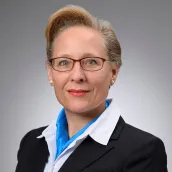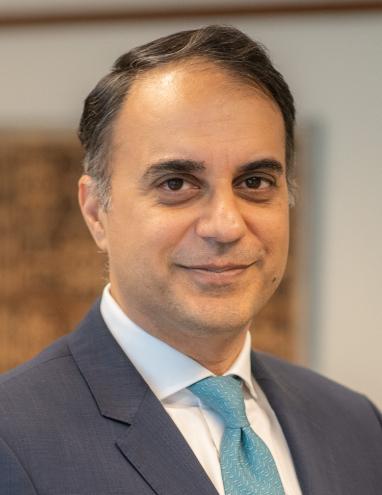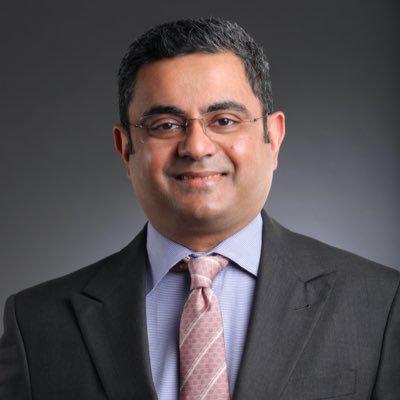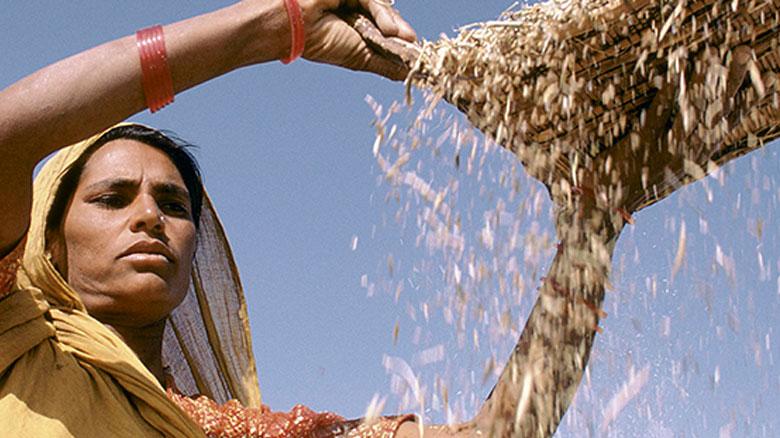[Sujeev Shakya] Good morning, good afternoon, good evening, depending on where you are joining in from. I'm Sujeev Shakya, your host today. I would like to welcome everyone, including audiences watching on World Bank Live, Facebook, X Twitter, and LinkedIn. We are here as the South Asia Development Update is being launched. The South Asia Development Update is the World Bank's flagship semi-annual report for South Asia, analyzing topical economic policy challenges and assessing growth prospects for the region and individual countries. South Asia is expected to continue to be the fastest growing emerging market and developing economy region over the next two years. The growth pickup in the near term is reliant on the public sector, whereas private investment in particular continues to be weak. Employment growth is falling short of working age population growth. The region fails to fully capitalize on its demographic dividend. Vibrant competitive firms are key to unlocking the demographic dividend, robust private investment, and workers' ability to move out of agriculture. A range of policies could spur firm growth, including improved business climates and institutions, the removal of financial sector restrictions, and greater openness to trade and capital flows. Today, the panelists will not be answering questions, but there will be people responsible on the chat to interact through the hashtag #SouthAsiaDevelopment and to pose questions online through the World Bank Live chat window. So today's format, in the next one hour, we have a Fireside Chat. Ahmed M. Saeed, CEO of Allied Climate Partners, and Martin Raiser, World Bank Vice President for South Asia, would be on conversation. And then there will be a panel discussion I'll be moderating with Subhrakant Panda, Managing Director, IMFA, Durr-e- Nayab, Joint Director, Pro Vice Chancellor of Pakistan Institute of Development Economics, and Franziska Ohnsorge, World Bank Chief Economist for South Asia. So Now, let's kickstart the Fireside Chat without much ado by inviting Martin Raiser, World Bank Vice President for South Asia, and Ahmed Abdel Saeed, CEO of Allied Climate Partners. This Fireside Chat would be for 18 minutes, and I'll get back with the panel. Over to you, Martin and Ahmed.
[Martin Raiser] Thank you. Thank you, Sujeev. It's good to see you, and it's particularly good to see you, Ahmed. We worked together some time ago in East Asia, and it's great to be back in touch with you through this virtual means of communication. Apologies to all of our viewers and hearers about my croaky voice. It's that time of year, I guess. It's not just the early morning hour in Washington. But I'm very pleased to talk with Ahmed about the South Asia's economic prospects. Let me just put a little bit of context behind this conversation. So South Asia is the world's fastest-growing region. The World Bank divides regions into seven, and South Asia now holds the top spot, and with about 6% growth foreseen this year and next. That's a very respectable growth rate, but it's largely driven by the very strong and robust growth in India. In other parts of the region, things are not going quite as well. Even when you look at India, you see that a big part of the boost to growth has come from strong public investment. There's some signs, perhaps, that now, finally, the private sector is starting to pick up, that there's some handover. But I'd like to ask you that question, Ahmed. From your experience, you've worked in the private sector, you've worked in the public sector, you worked for an international development institution, the ADB, and you're now with Climate Allied Partners. What is it that South Asia needs to do to build a robust private sector-led foundation for its economic growth so that we can talk about South Asia being the fastest-growing region, not just for this year and perhaps next, but for the decade to come?
[Ahmed M. Saeed] Good morning to you, Martin. I know you're in Washington, and good day to everyone else, wherever they may be. Thank you for having me here. I have to say, Martin, when our paths crossed in our work in East Asia, I always look forward to hearing you answer questions. And so it's a bit to my chagrin that the order is reversed here, particularly on a subject when there are so many online, I think, who know so much more than me. But I'll have to wait, or perhaps towards the end of this, I can get the opportunity to ask you a question or two. Let me try to just open up what I hope is an enlightening and useful conversation. I often think people say, “How do we unlock private sector-led growth?” And the phrase has always given me pause, because in fact, I really do think it's a bit of a misnomer. I had the privilege, years ago in my career working at the US Treasury, and a former US Treasury Secretary, who had also been the chairman and CEO of Goldman Sachs, used to say, Capital is a coward. And the point that Robert Rubin was making was that capital flows towards safety in a way from unpredictable and uncertainty. And so I think in the first instance, to unlock the engine of private capital growth in South Asia, we continue to need to make investments in the role of the public sector and in creating what we often call an enabling environment. In terms of what the MDBs can do, I often think about this question of how do we get more private capital into developing countries in really quite simple terms that I find quite useful. And I tend to divide it into three buckets. And bucket one is just improve the country, raise the ceiling of possibility. This obviously has been the work of the World Bank in close concert with governments across South Asia for many years, beginning with work on economic policy, domestic resource mobilization, improving the education sector, labor market, rigidities, and so forth and so on. The second category, I'll describe these categories and I'll describe something new or different, I think, that's emerging in each after describing them. The second is really at the level of the project. How do we improve economics? How do we strip off types of risk? Again, the World Bank Group is quite active. Because we know that investors are quite concerned about political risk, okay, let's provide a form of insurance to strip that off. So the first issue, of course, is the country. But the second really is the project level economics. Blended finance has a role to play here in terms of lowering the cost of capital. And then the third bucket, which I think really often gets ignored in all of this, is when there's a gap between the ceiling of possibility defined by the public sector environment and what we've been able to do through private action, how do we actually bridge that gap? And often I find that public sector institutions, and speaking myself as a veteran of one, the ADB, which is as you know, a sister organization to the World Bank, we often assume, if there's opportunity, the private sector surely will have stepped in. But the reality is that there are all sorts of rigidities and misunderstandings or lack of understanding between the public sector and the private sector. And in fact, public sector institutions have a role in addressing things that fall sometimes well short of market failure. They may just be market inertia. In each of these, I'd say the World Bank Group has been active for many years, but I'll maybe just offer some suggestions about new opportunities under these three categories. In terms of policy advice, I think we're in an interesting era where many countries are returning, if not to full-blown industrial policy for a greater recognition that the interplay between the role of the state and the role of the private sector is more dynamic and fungible and porous than we had assumed for a few decades at least. I think that's a really important place for the World Bank Group to step in and help governments identify what are best practices in terms of thinking about that intersection. The second thing I'd say is that climate change changes everything. Typically, we assume we don't know too much about the future. Actually, we know a lot about the future. We know a lot about how it's going to affect certain communities, how it's going to even affect the nature of opportunity, where technology spend will go globally. And I think helping countries think through proactively how they preposition themselves for a world we know is coming is slightly different from the work that the public sector institutions have been doing, and actually, in many cases, demands a reinvestigation from first principles of core tenets have approached. And so I think there's a lot of opportunity there. In terms of what to do around managing different kinds of risks, I've had the opportunity to participate in President Ajay Banga's private sector lab. There's some really interesting thing going on there. For example, how do you take tools that apply to the project level and apply them at the portfolio level? Could you do PRI at a portfolio level? I think there's a lot that can go on there. And then in the last category, one thing that's always amazed me is how little— As someone who's had the opportunity to move between public and private sector, how little they understand each other. There's a blog post, there's a podcast done recently by a very senior private sector MDB official who left and went to work for a very large global bank. And this global bank, I would say, is probably the most public sector leaning of the large global universal banks. And in this podcast, the person was asked what surprised you. And what she said was, what surprised me was how little they understood us, meaning her prior organization, and how little we understood them. This was probably someone who is the most private sector leading senior role in the MDB system, going to the place that was the most MDB leaning of the private sector institutions. That gap remains very large, and I think there's a lot that we can do to try to address it. Maybe I'll just pause there, Martin.
[Martin Raiser] Thanks, Ahmed. Lots of issues which we won't have time in 18 minutes to all cover, but let me pick up maybe one of them. You mentioned climate change is everything. So South Asia is one of the region’s most vulnerable, most exposed to climate change. I think by some estimate, 60 million people get affected in one way or another by climate disaster. I think over the past decade, that's the estimate in the report. So we did in the report some analysis to understand how do firms, how do farmers, and how do households adapt to the impact of climate change. It's quite interesting to find that firms are actually reasonably good at adapting. When a shock comes, they recover, I think, up to around 70% of the losses that the climate shock imparted on them. But households and farmers are less able to adapt. One of the reasons for that is that a lot of the households are still working in the rural economy. And of course, agriculture has inherently greater difficulty of adapting to changing weather patterns. That's historically been true. And for agriculture, which in South Asia remains in many cases low productivity, that's a for sure true, right? So when you look at the climate challenge for South Asia with climate changing everything, how do you think policymakers should prepare for the likely impact of climate change? Actually, one more thing that the report also does point out is that one of the most effective climate adaptation strategies is development in the sense that public goods, better infrastructure, better build cities, better transport, just access to basic amenities is one of the complementary means by which both firms and households and farmers adapt. But when you look at the vulnerability and the fact that particularly the most vulnerable of society have a harder time adapting, what do you think governments should do to prepare themselves for the likely multiplication of negative climate events going forward?
[Ahmed M. Saeed] Yeah, as you know, that's a huge... As you say, there's so many things that one can't fully delve into in a limited period of time. I think there's so much embedded in that question. You close by asking, what can governments do? I think we're here just at the tail end, just a few days after the Easter weekend. I will borrow a phrase and say that the first thing governments need to do, and just extending my earlier comments on the relationship between public and private sector is, render on to Caesar what is Caesar's, and to Adam Smith, what is Adam Smith's? I think in the first instance, when it comes to adaptation, which you referred to, we have to recognize that a significant portion and a larger portion than investment that will go into resilience is fundamentally a public good. And so the role of the state in both in building its capability to deliver, whether that's mobilizing resources or its institutional capacity to oversee, there is simply no replacement for state capacity when it comes to addressing the challenge of climate change, especially in a region which is so incredibly vulnerable, especially in a region which is so incredibly vulnerable, where institutional capacity is limited in many cases, to large firms and the governments themselves. Having said that, I'll make another general comment, I think, about climate change. We often hear of a zero-sum narrative between developed and developing world around climate change. That's entirely understandable in certain cases, even though the cost of renewable technologies has come down, they're not always, for example, basal technologies. So there's a natural hesitancy, I think, on the part of those whose populations still fall well below the global poverty lines to say, “Let me fix this first. Let me address poverty first, and then I'll get to that.” And I think that that narrative, it's really important that we all invest in countering that narrative because I think it gets several things wrong. The first thing, of course, it gets wrong is that the greatest suffering will be in the very places that are the most vulnerable, and in many cases, the most destitute today. And so the greatest responsibility or the greatest self-interested need for action, for better or for worse, is in those places. But that's really on the risk side. On the opportunity side, I think we haven't yet fully realized the development opportunity that decarbonization represents for the planet. And I think at the highest level, for the first time in the history of this project of economic development, this noble work that I think everybody who's here is interested in or working on, for the first time ever, the actual fate of all future generations are totally intertwined. The multibillionaire financier on the Upper East Side of New York City's grandchildren, that individual knows that his or her grandchildren's fate is entirely dependent on the decarbonization trajectory of India or Pakistan, or Indonesia. That's never been the case before. Yes, of course, everybody had an interest in the growth of the global economy. There were spillover benefits for everyone. But that deep level of intertwining of common fate actually, I think, starts to unlock possibility at a scale that hasn't existed before. Actually, we see that. If you look at— In all of these initiatives, they're complex, and they're large, and they're early days, and so they're much criticized. But I think it's important to note what's unique about them, the JETP process, the Just Energy Transition Partnerships. If you look at the banks who are involved and the It's a level of interest, it's at the CEO level of the most systemically significant global finance institutions in the world. Those CEOs, emerging markets were number 50 on their priority list if it wasn't for decarbon, the need to address climate change. And so suddenly we have an opportunity for developing countries to access resources and expertise at a level that wasn't there before. That's one aspect of it. And then the other thing I'd say is that we also now know a bit of what the future looks it looks like. And it is possible for countries to think about how they pre-position themselves around this decarbonized economy of the future. How do you train your people? What skills do you want? How do you think about your natural resources and the value-added capabilities that may be around with them? How do you ensure that your border adjustments? I think all of that represents enormous opportunity. And it's always easier to drive growth with the wind at your back than it is to fight the forces of change. I think that all of those things mean that climate change, which represents both an existential threat, at the same time represents an unprecedented opportunity. And therein lies, I think, much of the opportunity as well as the risk for the region and for other parts of the world.
[Martin Raiser] Thanks, Ahmed. I think Sujeev is going to remind us soon that our time is up, but I did want to come back one further time. You mentioned industrial policy in your first intervention, and now you mentioned the opportunities of decarbonization. And of course, it does turn out that at least one of the countries in our region, India, is looking at that very actively, employing industrial policy to bring green technologies to India, not just for its own decarbonization needs, but essentially as a means of attracting investment and creating jobs. Now, this is one of the weaker aspects of South Asia's economic development in recent decades. Growth has been quite strong, but job creation has fallen behind the rate of increase in the working age population. So only about two-thirds of the new entrants into the labor force have actually been successfully integrated on average in South Asia. And employment rates in the region have been falling, including for men. It's not just that female labor force participation is low. It's also that male labor force participation has been falling in South Asia. When you look at that picture, a lot of it, I think, has to do with what we talked at the beginning, the difficulty of creating sustainable private sector investment. Does climate change that calculation as well? Do you see a future of job creation and green jobs, or is it manufacturing that's going to bring the future of job creation to South Asia? How can South Asia deal with the issue that employment has been lagging overall?
[Ahmed M. Saeed] You know, Martin, I said at the outset that I prefer to ask you questions rather than to answer your questions. So I'll take my stab, but I would love to hear your views. I think that green industrialization, for lack of a better phrase, is part of the story, but it's not the entire story. And your team at the World Bank and others have been, even in this report that's being released today, point to a number of inefficiencies in labor markets, in lack of infrastructure spend, in limited capability of the states. So there's a lot. I thought maybe just I'll single out two things that I see in the region that I haven't read as much about, and I'd be curious if the World Bank has done work on them. I think they could be potentially interesting because they represent opportunities to drive change a bit below the level of truly structural engagement. The first relates to the quality of financial intermediation. In an economy with large state-dominated banks, oligopolistic commercial structures, one of the things that happens is that capital really doesn't get allocated as efficiently. I think one opportunity, it seems to me, I would postulate to drive incremental change is really to invest in improving the quality of financial intermediation and the establishment of new high-quality financial intermediaries, something actually the IFC has a history of doing in India quite successfully many years ago. That would be one comment that would be interesting for my side to explore further. The other would be, the region has very small firms. They tend to be relatively less productive or relatively less job creating than small firms in other regions. I found, at least in my work at the ADB, that the category of small firms was misleading. That in fact, the subset we were looking for was a category of high growth firms, all of which started small. It'd be interesting to see if there's more that could be done to disaggregate those and make sure that the financial resources that were the hose of capital we direct at the small firm ecosystem, how do we get it to flow more precisely to the subset that actually can drive growth in the future?
[Martin Raiser] Thanks a lot. Actually, that's a really good point that in South Asia, a lot of the job creation takes place in large firms or in very small firms, but much less job creation takes place in firms that start small and grow large over time. I think that's clearly one part of the diagnostic. I very much agree with you that while green technologies provide part of the answer, they're only part of the answer, and it's a broader problem. But there's also a big opportunity in the services sector. One of the things that we find is that in part because South Asia has a comparative advantage in services and has been able to use it so effectively, it has the possibility, even that current technologies, to follow a decarbonization or a growth path that is less carbon-intensive than the heavy industrialization-based growth path of East Asia, for example. We have to leave it here, but it's fascinating to talk to you, Ahmed, and I hope we get a chance to continue this conversation. With that, thank you very much all for listening. I look forward to hearing the panel elaborating further on this point. Back to you, Sujeev. Thank you.
[Sujeev Shakya] Thank you. Thank you, Martin, for summarizing it. And thank you, Ahmed. I think it sets the context. And we are talking about three things I could just take away from the conversation, which sets the context for our panel, is to look at the bridge between public sector thinking and private sector action that is taking place. And as Ahmed mentioned, as the climate change changes the future. And so how do you think proactively adaptability of the firms and how household farmers, rural economies need to transition and how investments into resilience is a public quote. And I love what he talked about was on how fate of everyone is going to be intertwined. And that's a fascinating way to start this conversation. So we have with us three panelists. Durr-e- Nayab is the Joint Director and Director Research at the Pakistan Institute of Development Economics. We have Franziska Ohnsorge is the World Bank Chief Economist for South Asia, and Subhrakant Panda, from India, Managing Director of Indian Metal and Ferro Alloys Limited, also the former President of the Indian Private Sector Body, Federation of Indian Chamber of Commerce and Industries. So over the next 40 minutes, we'll try to cover three major pillars, growth prospects, jobless development, and job-oriented development, and then to look at climate adaptation. So I would start with Franziska, and I think in this report, it points out that South Asia continues to grow as we were discussing, and Martin was also mentioned. Also, the report does highlight provide some large differences across different countries like India and in the earlier fireside chat also came in and the rest of the region. So could you elaborate a bit on that? And I think we can do in a rounds of three minutes each so that we can have more conversation. Over to you, Franziska.
[Franziska Ohnsorge] Thank you, Sujeev. Thank you. Yeah, the region is— South Asia is the fastest-growing emerging market in developing economy region. We expect growth of 6 and 6.1. But as you said, that's because of strong growth in India. For India, we expect 7.5 and 6.5% growth this last fiscal year and this fiscal year. In the rest of the region, growth is going to be in line with that elsewhere. So 3.25% and 4.25% next year. And that means that the rest of the region is not going to make much progress towards advanced economy per capita income. Now, you ask what are the reasons? It depends a bit on the country, but there are two main cutting challenges, so cross-cutting challenges. One is a short-term challenge, just trying to emerge from the troubles of the last two years. Several countries in the region had balance of payments crisis or debt problems. And while these are being resolved, the economic activity has yet to fully recover. The other issue in these countries was that in several of them, policies were taken to address balance of payment pressures that interrupted economic activity. So import controls, foreign currency controls, export surrender requirements, heavy-hunted interventions that, yes, they helped ease some of the balance of payments pressures, but now it takes economic activity a bit of time, even if they're beginning to be unwound, to really recover. So that's a short-term challenge. And then long-term, there have been long-standing structural challenges. So one of them is low productivity. Labor productivity is on par with that of [Sub-Saharan] Africa. Together with Africa, it's the region with the lowest labor productivity. Employment, Martin and Ahmed have already touched on that. Labor markets are weak. Almost all countries in South Asia fall into the bottom, in the lowest quartile of emerging market and developing economies by the number of women who are employed and by the number of people who are employed in non-agriculture. Culture. The region is the largest source of emigrants, of migrants around the world. Labor markets are just weak, and that's what politicians are struggling with. And then finally, the region is also fairly close to trade. On average, we show in our report, the trade to GDP ratio is about 30 percentage points of GDP lower than in the average emerging market and developing economy. That means opportunities for competition missed. That's opportunities for markets missed. That's a whole growth opportunity missed there. So these are long-standing challenges, and they continue to constrain growth in the region.
[Sujeev Shakya] Thank you. Thank you, Franziska. That sets the stage. And I would now move to Nayab to talk about the population growth, which we use always as an engine for output growth. And you've been working a lot on demographic trends. And do you think that there is a slowing down? And will it be able to capture the demographic dividends? And is there differences in how different part of South Asia is responding to this? So maybe we can kickstart from there your intervention, Nayab. Over to you.
[Durr-e- Nayab] Thank you, Sujeev. This idea of demographic dividend, I mean, I love it for the fact that it's like a crossover between economics and demography. Economics means demography and you get a demographic a dividend. But we have to be very clear that it's just a potential. It's a window, it's a potential, and you have to repair it by doing the right things. This idea came out from South Korea. In hindsight, they were analyzing why did South Korea developed so quickly. They found out that it was its structure and the investments they have made in human capital. Human capital is the key. I mean, without investing in human capital, which includes education, health, skills, demographic dividend cannot be deep. And looking at South Asia, we see that countries of South Asia are at different stages of demographic transition. We see India and Bangladesh who had a faster fertility decline. And for them, the proportion of the population in the working ages, it will start to go down after 2030. Then we have Pakistan, which almost has stagnating fertility decline. For us, the proportion would still be high for the working ages, still after 2050. We have different strategies for different countries, but the key remains human capital, and I would add labor and employment, the job market. If you look at South Asia, you have India, which is growing fast. But if you look at the unemployment rate, especially for the young, the under-25. Just a recent report coming out of India, it showed that 42%, if I'm not wrong, of the under-25 population in India is unemployed. Then you have Pakistan, which does not show economic growth. We even see over 30% unemployment for the graduated youth, people with degrees. I mean, if we think that equipping individuals with education is panacea for everything, we see that even education is not sorting the problem. It's complex strategies. I mean, you have to have right education, relevant education that links to the labor market, and not just jobs. I mean, the jobs have to be gainful jobs. Again, I do most of my work on Pakistan. There is a lot of unpaid labor. I mean, that's not going to bring you a demographic dividend. A very major part of demographic dividend lies in after employment, in savings, in investment. And that's how the whole idea of second demographic dividend, it is from human capital, bringing you more employment opportunities, bringing in more income, to more savings, to more investment, and the virtuous cycle of more investment, more savings, and more invest, and bringing in more money, and more savings. So if you look at South Asia, yes, some countries are showing more growth, some are not. But on the whole, we are missing on something. India is like an envy for Pakistan right now. Their economic growth is something that we look up to. But just a report coming out yesterday showed that the inequality in the country is increasing. So you cannot keep demographic dividend if there is no equal access to opportunities. You have to have an aspect of equity and equality in economic growth. I mean, it might sound a little dramatic, but unless everyone is a part— I mean, disparities are a natural thing. You cannot expect all the population to be equal. But a more equitable policy, a strategy that brings in everyone, which leads to growth, but a growth that caters to everyone's need.
[Sujeev Shakya] Thank you. Thank you, Nayab. I think what came out very clearly is that we are looking at demographic dividends, but the dividend has to also be equitable. I think that's a big point. So let's shift gear and I'll go to Subhrakant Panda. And we're now talking about today, even in the Fireside Chat, it was coming out that a lot of this is being pushed by public sector growth, but you've been writing about and, of course, leading a private sector, apex body. You talk about how private sector needs to step up and drive growth. Would you just explain that a bit?
[Subhrakant Panda] Thank you, Sujeev. So you're absolutely right that if you look at growth in India over the last two or three years, it has been given a boost by public sector investment, which has been at record levels. If you look at the last budget for It was at 10 trillion Rupees, which is 3.3% of GDP, and the outlay in the current year's budget has been hiked further by 11% to 11 trillion Rupees. But I think one needs to understand the context in which this has happened, because if you look at the COVID period, obviously, that was a difficult time where economic activity was insipid, India didn't have the luxury of helicopter money. And I would say even the wisdom of not doing so. And the way the government approached was to ensure that there was a helping hand extended to those at the bottom of the pyramid, some degree of fiscal incentives, but more than anything else, looking at the COVID crisis as an opportunity to address it through a sustained reforms, which would look to convert that crisis into an opportunity. And the vehicle to do so was through public sector CapEx. And we, of course, all know that when you look at spending on infrastructure, it is not just the money spent on infrastructure, but the knock-on effect, the multiplier effect that it has across various sectors of the economy. And that is where I think I would really commend the government for the heavy lifting that it did during the COVID period and its immediate aftermath, which kept the economy chugging along. But that is obviously not a long term solution. And in various interactions, senior government officials, including the finance minister and others, have been pushing for private sector investment. But what is good to see is that that is now beginning to happen. You are seeing more than just green shoots. In fact, the data that is that is out there suggests that as the uncertainty of COVID has receded, even though we have other global crises, et cetera, which are a cause of concern. But as in general, as uncertainty has receded and India has done well economically, that's when the private sector is stepping up in terms of investments. And in fact, some of the data which has been released recently, which is by the Reserve Bank of India, pertaining to loans which have been sanctioned in the April to December 2023 period, that shows an increase of about 23%, which indicates that certainly private sector is now in that mood to invest and move things ahead. FICCI also regularly carries out a manufacturing survey, and what that has shown over the last six odd quarters is that the average capacity utilization has steadily increased to a level of about 74, 75 %, which means we are in that territory where as surplus capacity starts getting used, there is that incentive to start investing. So I would I would look at it from the point of view that government has done a commendable job in terms of the heavy lifting during COVID and is now elegantly stepping aside and letting the private sector come in and do its bit. That apart, there has, of course, been a lot of focus on reforms, as I mentioned. The biggest of them, of course, was the GST being implemented, which removed internal barriers to trade, creating a very large unified domestic market. Not to a slew of other reform measures, such as, I mean, aimed at reducing the cost of doing business through the National Logistics Policy. The ease of doing business has been a continuous focus by way of decriminalization of minor offenses, doing away with old rules and regulations which don't make sense in the modern world. So all of this, I would think, have contributed to not just economic growth in India, but also creating the pathway for private sector to now step up and do its bit, which is what we are now seeing in terms of both the high levels of GST collection, what was about 1.4 trillion a month on average, has now moved up to about 1.6, 1.7 trillion a month. And you're also, as I said, seeing private sector investment start to ramp up, which is reflected in the GDP numbers, most recently, of course, 8.4% in the previous quarter.
[Sujeev Shakya] Thank you. Thank you very much, Subhrakant. I cannot agree more to what you're saying, leading Nepal Economic Forum or Private Sector Research Analysis Think Tank, and we've been pushing. And so in the Nepal 2030 report, we talked about how private sector would be the engine for growth. In case of Nepal, $7, $8 billion required in investments, and the domestic capital formation is less. So you need international private sector to come in. So that's the only way we can move ahead. And it's great to hear the India story. And I'll come back to jobs and the private sector in the next realm. I would move back to Franziska. And in the report, the South Asia Development Update, there are some highlights on policy options. How do you look at regions employment weaknesses? There are issues relating to opening up trade, strengthening of legal protection of women's rights, and also firm level job creation. So a lot of these things have been brought up at the update. So especially given the fiscal challenges the countries are having, how can institutions like the World Bank play a role in facilitating these policy implementation? Over to you, Franziska.
[Franziska Ohnsorge] Thank you. Can you hear me? I'll mute myself. Okay. So in the report, we narrow down the problem to the non-agricultural sector. In almost all countries, the non-agricultural employment share of the working age population is in the bottom quartile of other emerging markets and developing economies. So that seems to be the main source of the problem, the non-agricultural sector. And then we look for a whole range of correlates. What could be the sources? And we identified three main factors that could be the root of the problem in South Asia. South Asia stands out in its low firm size. Almost all South Asian countries have an average firm size that's well below the average in other emerging markets in developing economies. Small firms don't create many jobs if they don't grow very quickly. And firms in South Asia are small. The second thing where the region stands out, we discussed that already, is trade. The trade to GDP is just very, very low, and that tends to be associated with less employment creation in non-agriculture. And finally, education, Durr-e- mentioned it already, Nayab, sorry. Nayab mentioned it already that higher education is associated with more employment creation. But of course, Nayab is right. It's not the only thing. Many things need to play together. So the policies then need to focus on what seems to be three priorities for the region, across the region, most countries of the region. And you're right that governments have not much room to play simply because fiscal positions are strained in just about every country, almost every country in the region. And a lot of these policies that could help would likely cost money. For example, tariff reduction, the region has above-average tariffs, their tariff reduction, given how much the region relies on trade taxation to generate as low revenue ratios, which are low anyways, yes, that would have fiscal cost. Or things like another obstacle to firms growing seems to be land markets. Land markets, in particular, it costs money to digitize them, to create title registries, et cetera. Here is something where the World Bank can help. We've developed a lot of expertise in making... Markets run smoothly with the back office functions, like titling or registries or getting labor regulations right or at least up to best practices of what's normal in other emerging markets, developing economies. Size-dependent policies tend to penalize any fund that grows above a certain size. Maybe it's time to raise these thresholds in labor regulations, maybe in tax regulations. So that will, in the long run, cost less of an administrative cost for tax authorities and labor authorities. So not all of these policies need to cost money, but some will. And the World Bank can step in with money, of course, or MDBs can step in with money. But maybe more importantly, they can step in with international expertise, like a benchmark. What is the best practice? And that is something where the knowledge function of the World Bank and its global footprint, the fact that it's present really everywhere, that is something where the World Bank can really contribute. We hope. Back to you.
[Sujeev Shakya] Thank you. Thank you, Franziska. This has set the stage. So we are keeping on putting into three different perspectives, and that's a good policy perspective. We discuss about policy formulation, policy implementation, where the World Bank can come in. So I go back to Nayab to continue the discussion we are talking about equitable, and we went into when we are talking about equitable, we also talk about women, 50 % of the population. And we see that in South Asia, that is a challenge where we have women in informal work, unpaid work. Could you just talk a bit about this and why this is important in terms of increasing labor productivity, accelerating growth? Where does the role of women come in? You've been doing a lot of work around that, Nayab. If you would like to share a bit of light on that.
[Durr-e- Nayab] Well, no country can develop with half its population not being part of it, being treated differently. The World Bank flyer said that three-fourths are not in the labor force. In Pakistan, it's even worse. It's four-fifths not in the labor force. It's just little over 20% that are in the labor force. But for me, even starker is the fact that despite low labor force participation rates, the unemployment rates are still higher for females than for males. So what is it that the economy is doing to discourage female workers? I think I would say that... And I mean, the female employment, it's a combination along with high unemployment rates. It's unpaid work, it's involvement in informal employment, and most of the women are involved in non-market us. I mean, at [inaudible], we did a calculation monetizing the non-market work that females do in Pakistan. If you start monetizing that work, it's much higher than male. But why is it that the formal labor market does not provide them the opportunity? There are barriers, and we need to reduce those barriers. Those barriers are in access to education, access to jobs, the discriminatory frameworks in which they have to work, the labor market laws. Franziska also talked about it. And one thing about firms, in Pakistan, the size of the firm is the problem. Maybe because most of the firms are family businesses. I mean, they work so differently that it's not exactly creating jobs. It's not open to everyone. It's like a family business, small in size, limited job opportunities. So the whole institutional framework in which businesses are being conducted, I think they also contribute to low female employment. Then to top that, there are the gender norms. I think it's something that you find in all South Asian countries, men and women. I mean, they are treated differently across the globe. But in South Asia, you see this gender characterization much more than in other countries. So if the females have to be part in the formal market, in the labor market, of course, the economy is going to be more productive if there are more workers. But drastic changes need to take place in the mindset and in the way women and female workers are perceived in the society.
[Sujeev Shakya] Thank you, Nayab. It's very interesting. I think just to bring you the Nepal context here is that we have seen some very interesting statistics coming out of Nepal in terms of women participation in business, in terms of the index on South Asia, and you are aware of those index. Also, as I was doing some writing last [week], it's very interesting to see that in the capital markets, there are out of every five men participating in capital market. There are four women participating.
[Durr-e- Nayab] Like in India, that's why I was thinking. You see the female labor force participation much higher in Nepal than in other countries.
[Sujeev Shakya] Out of the four countries.
[Durr-e- Nayab] I mean, human lives don't work in isolation. There are so many factors going together.
[Sujeev Shakya] Yes, definitely. Then we can continue that discussion. But again, shifting gears a bit in terms of looking at private sector, Subhrakant, in terms of one of the key things that we're talking about is that non-agriculture sectors have not been able to create enough jobs. So where does the private sector come in to drive these non-agriculture jobs in the region? And how can governments or other institutions support this?
[Subhrakant Panda] If I were to talk about India, what is very clear is that the agriculture sector accounts for about 17 to 18% of GDP and close to 50% of jobs. And that's simply not tenable. So going ahead, that is something that needs to be addressed, and it is being addressed. And I think there are two answers to this. One is, of course, the services sector, which has done very well in India, which has grown at a rapid clip, which has contributed to growth. And it will, of course, do its bit. But for a country like India, I think it is important for the manufacturing sector to step up. Now, if you look at the last 15, 20, 30 years, despite the efforts of multiple governments, manufacturing has been in that 15 to 18 % of GDP range, and that's simply not good enough, which is why I think this government has focused very sharply on measures which will take manufacturing up to 25 % of GDP to begin with and then move up further. And that's, of course, very important, both from an economic perspective to be self-reliant to the extent possible, as well as the fact that job creation is going to be influenced strongly by how the manufacturing sector responds. Now, in that context, just to again repeat the points I had made earlier that sustained reforms focused on ease of doing business, on reducing the cost of doing business. All of these have helped provide a boost to manufacturing. But what has in particular worked out very well is the PLI scheme or the production-linked incentive scheme, which is intended to create global manufacturing champions based out of India, where after a careful review, 14 sectors were identified to begin with, which are either sensitive or where India is unnecessarily import dependent. I mean, one example of that would be personal electronics. I mean, one way to look at it is that God has agreed that we need to import some fossil fuels, but there is absolutely no need for us to be for personal electronics built to be as high as it used to be. And in that context, the PLI scheme, particularly for mobile phones and personal electronics, has done exceedingly well with a rapid increase in output over the last 12 to 18, sorry, for 18 odd months. This is something that... I mean, look, one way to look at it is that the PLI scheme is not a panacea for everything that needs to be done to boost manufacturing in India, but it certainly is a focused effort and a downside better approach than earlier subsidies which were misdirected or not efficiently transmitted across. Whereas this is a limited time scheme which is intended to provide a boost to certain sectors. So some in substance, if you look at it from a private sector perspective, if you look at it from a job creation perspective, I think both the services sector needs to continue its momentum, which is happening, and manufacturing needs to pick up and rise significantly in order to absorb people moving away from the agricultural sector and looking for jobs. That apart, I think from a general perspective as to what all needs to be done. We've talked about the demographic dividend. That's, of course, India is not just the world's most populous nation, but the youngest. The dependency ratio is very low. And more importantly, the number of people in the working age population is going to be higher than the non-working population for the next 2-3 decades. So that is an unbelievable opportunity that lies before us. But of course, that means investment in education, health and skills, as was pointed out. And in each of these areas, I think, whether it is the new education policy, which is more flexible, whether it is the increased [outplace] for health, or, of course, the massive skill development mission, which has been the government's focus area. All of these are important to ensure that we are that we have a population which is employable and is adequately trained to take up jobs in the modern area, in an era where we have artificial intelligence machine in learning, et cetera, which certainly will put pressure on the low-end, low-skilled repetitive jobs. And that is where, of course, scaling and reskilling is something which is important.
[Sujeev Shakya] Thank you. Thank you, Subhrakant. So we come to the final round. And just looking at the clock, we have very few minutes left. So one issue that the South Asia Development Update Talk highlights is the success of firms in climate adaptation. So I'm going to give 60 seconds each to each of the three speakers. I would want Franziska to talk about a bit of the public sector support and what governments can do. Then continuing the equitable distribution part of it, I'll come to Nayab to talk about how we can make this adaptable. And then I would want to get a private sector view from Subhrakant. So we'll go Franziska, Nayab, and Subhrakant, 60 seconds each. Your final comments on climate adaptation.
[Franziska Ohnsorge] Thank you, Sujeev. Yeah, so there's three things that governments can do. First is to provide public goods and services, because without that, households and farmers struggle to adapt to climate change. It really needs a classic, old-fashioned public goods and services, just development. Second, firms really adopt to climate change through technology, so anything that can help firms access finance, adopt new technologies, whether it's informational access to finance, will help. And the third is actually picking up on what Subhrakant said. It's true, the demographic trends are a golden opportunity for the region, not just for growth, but also for climate adaptation. If the jobs can be created that allow these households and farmers that are being hit by climate shocks, that allow them to move into a non-agricultural job, and that requires all the policies that come with it, including the education policies that Nayab mentioned.
[Sujeev Shakya] Thank you, Franziska. Over to you, Nayab. Your 60 seconds.
[Durr-e- Nayab] My 60 seconds. I mean, climate crisis is It is very unfair. It's the poor that suffer the most. Adding to the three things that Franziska said, I'll add three to it. Number one, climate resilient infrastructure. I remember a Japanese making a statement that it's not the earthquake, but bad construction that kills people. We have to get the infrastructure right. It does not have to be expensive, but it has to be smart. That caters to the shocks that every area can be subjected to. Then the governments, especially the governments and any organization that's investing on it on early warning systems. The people need to know that— I mean, you can't predict it in every case, but a lot of disasters can be predicted. Early warning system and picking on what Ahmed and Martin said in the start, there needs to be a global cooperation. The poor suffer, the rich enjoy their life. I mean, this needs to change. They have to mend their ways. There has to be a global cooperation so that climate is not a source of disaster for anyone.
[Sujeev Shakya] Thank you. Subhrakant, your 60 seconds. Private sector, climate adaptation, what can we do?
[Subhrakant Panda] Before that, let me just make a quick point, which is that if I'm not mistaken, India is, I think the only large economy, certainly the only one in the G20, which has stuck to its commitments made at COP 26 in terms of renewable energy transition. And there is a great degree of focus driven by the Prime Minister's personal conviction about the need to address climate change in a very serious manner. So whether it is the National Green Hydrogen Mission or a general approach towards decarbonization, I think that is something which has the attention of the highest levels of government. Now, for a private sector perspective, I'd actually go back to a point which Ahmed made in his remarks, which is that institutional capacity is actually limited to government and to large firms. So in a study that that FICCI did last year about awareness of and preparedness for sustainability, we were very pleasantly surprised amongst the MSMEs, I should add. We were very pleasantly surprised to see the degree of awareness that is there, driven to a large extent by supply chains needing to be compliant. So larger companies seeing and handholding their supply chains to ensure a journey towards sustainability. But I think the challenge before us and what I would like to see is how do we... The big boys know what needs to be done. If they don't, they know which consultants to go to and can afford them and implement ideas. I think the challenge before us, in as much as the private sector is concerned, is how to see that the small and medium enterprises have adequate handholding because there is that awareness, there is that desire to change. But the capability and the financial ability to go through with what needs to be done is somewhat constrained. So I think that is going to be key for us to see that the entire industrial ecosystem as a whole makes that journey towards sustainable growth.
[Sujeev Shakya] Thank you, Subhrakant. This has been a wonderful panel. And I think just to continue, we need to continue these conversations In February, in Nepal, we hosted the first Himalayan Future Forum. And as Ahmed was saying, everybody is [fated to intertwine]. So private sector, the government, the development partners, MDBs, and academic institutions, think tanks. We all need to come together to really keep this conversation going. Thank you very much, panelists, for amazing discussions. And there was a lot of insights. And do join the conversations through South Asia Development and read the report that has been launched today at worldbank.org/southasiadevelopment. Thank you, panelists, organizers, and especially people joining the sessions from different parts of the world. Have a good day, good afternoon, good evening, depending on where you are. This is your host, Sujeev Shakya, signing off. Thank you, everyone.
[Subhrakant Panda] Thank you, Sujeev. Thank you, everyone.












